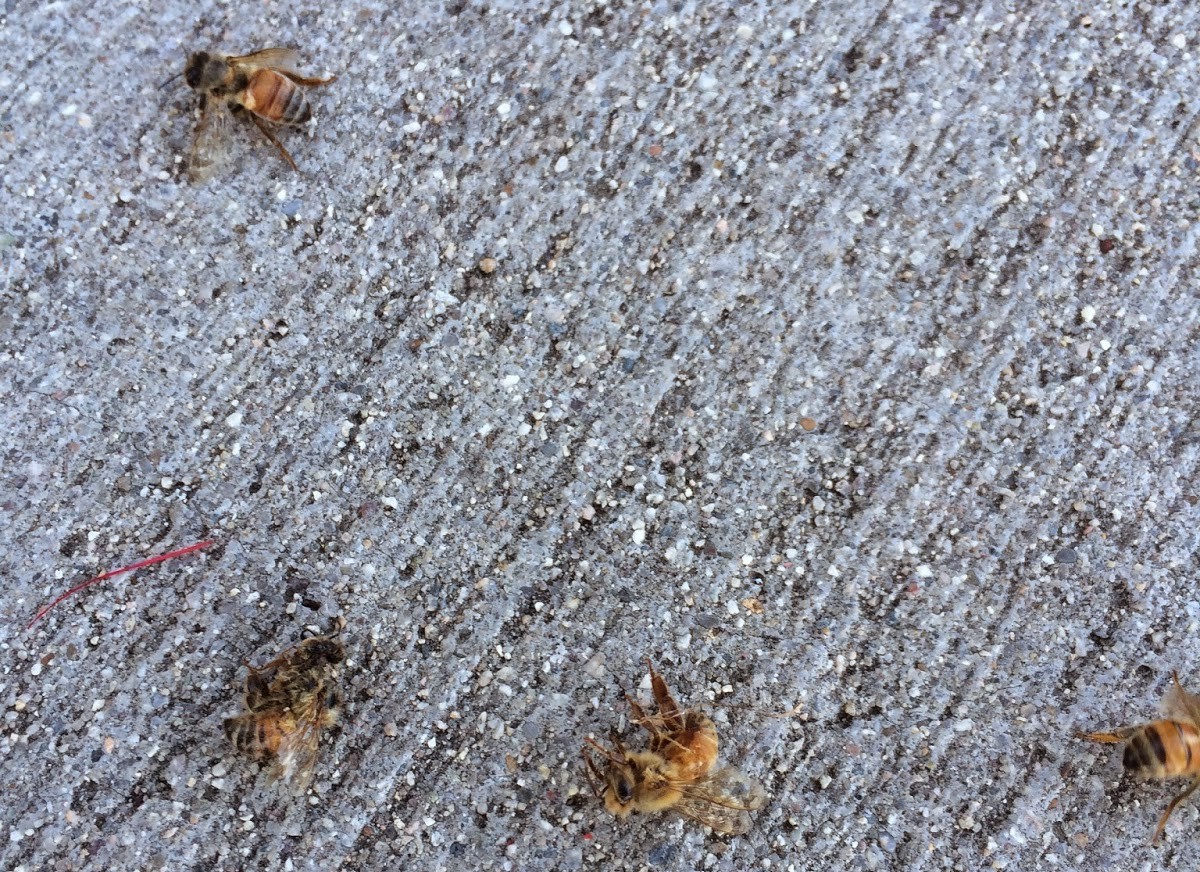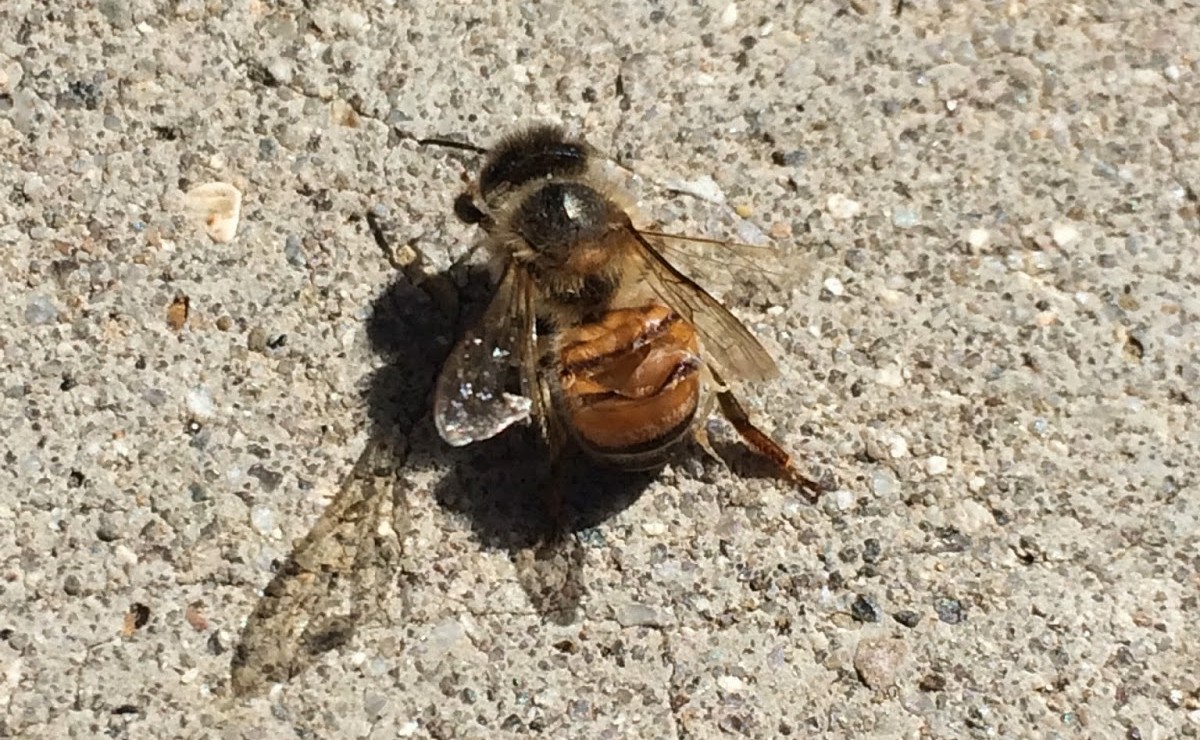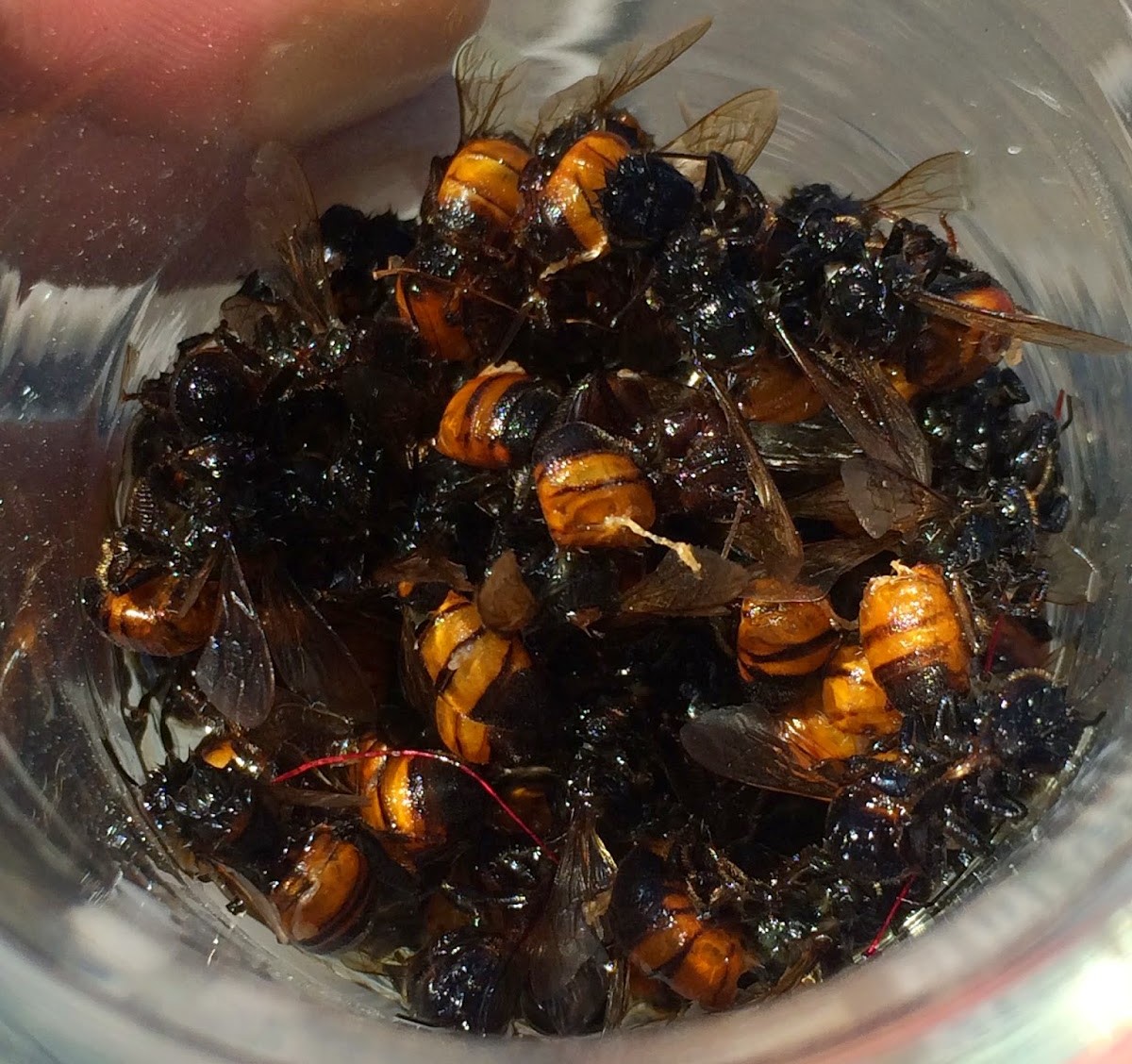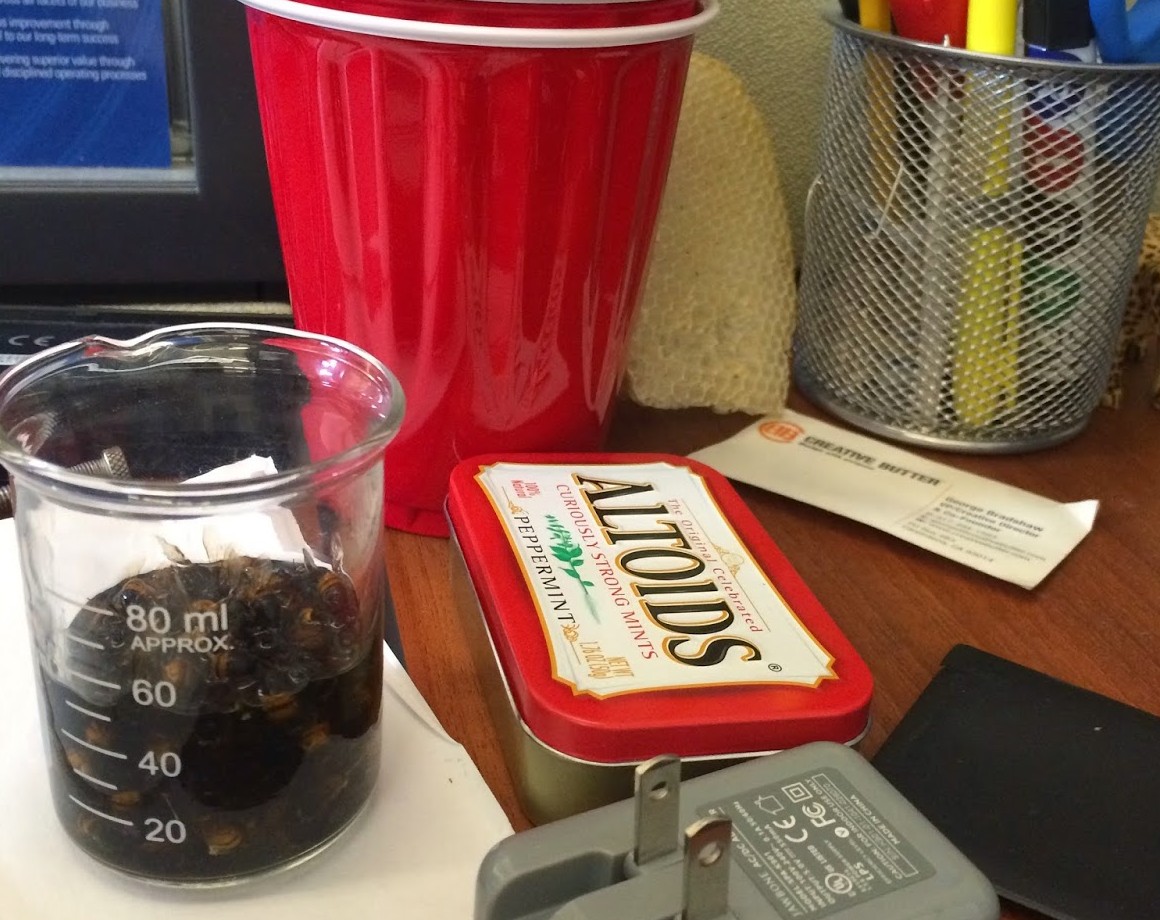My colleague and I usually walk around the block here off Hollister and Robin Hill in Goleta mid afternoon to enjoy some fresh air and give our eyes a break from computer screens and robots.
Yesterday, I’d been impressed by just how many bees were visiting the bottle brush flowers, and the seemingly healthy indication of spring after the bit of rain we had.
Possible Pesticide Incident
Today as we rounded the first corner of our walk we came across scores of dying, spasming, and crawling bees, some dead but none decomposed. This was all under a single tree next to a small garden/entrance to a business, in a ~30 sq-ft area on the grass and sidewalk.

Some of them seemed to have burst abdomens but were otherwise intact. Pretty traumatic scene to a beekeeper.
I sent a text to SBBA’s Paul Cronshaw asking what I could do – he shared the protocol for collecting dead bees for pesticide sampling –
We kept walking, seeing if other trees had similar ‘bee drops’ – maybe they’d all been caught out in the rain, or maybe they were all sprayed? The next bottle brush tree had a few dead bees under it, but nothing like density of the first one.
“If that’s whats happening to the bees, what’s it doing to us?”
We didn’t see many more dead bees for the rest of our walk. My colleague also said he’d been walking through there this morning and actually been ‘bopped’ in the face by several bees a little further up the road, and he had never experienced that. I get bopped when I open up my hive and agitate my bees, but also not on this walk.
As far as I know there are no hives in the area (Don Cole and the San Marcos Farms family is a couple of blocks up, and there’s sometimes a couple colonies getting started in their migratory gear).
Taking a Sample of Bees
So the next step was to follow the advice of Paul and the USDA. I came back with a little beaker of isopropyl alcohol – its supposed to be diluted to 70%, and set about collecting 100 samples.
It was sadly quite easy to locate 112 of the afflicted bees in such a small area after a few minutes. Some were still moving a bit, but it was pretty easy to pick them up by the wings, and not get stung.
So here I am at my desk typing a little description, and getting ready to mail the samples.
One of my other colleagues from the engineering lab (who provided the Isopropyl) took an interest and said “If that’s whats happening to the bees, what’s it doing to us?”


